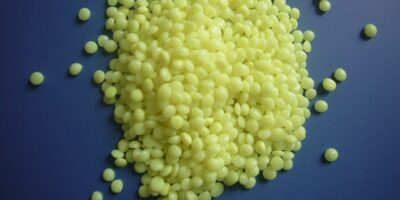As the demand for high-whiteness plastic products increases, whitening masterbatches have become an essential component in the plastics industry. These masterbatches are produced by mixing and granulating resins with fluorescent whitening agents to enhance the brightness, whiteness, and visual appeal of plastic materials. Since whitening performance depends largely on the brightener selected, choosing the correct optical brightener for whitening masterbatches is critical to achieving optimal results.
1. Why Whitening Masterbatches Require High-Performance Optical Brighteners
Whitening masterbatches are widely used in PP, PE, PVC, and other polymer systems. The fluorescent brightening agent plays the central role in determining:
- Final whiteness
- Brightness and gloss
- Stability and yellowing resistance
- Processing performance
High-quality optical brighteners ensure consistent whitening, while inferior or mismatched types may cause yellowing, precipitation, or weak brightness.
2. The Need for Whitening Masterbatches in Recycled Plastics
As plastic waste continues to rise, governments and industries encourage extensive recycling to reduce environmental impact. However, recycled materials often suffer from:
- Low initial whiteness
- Strong yellow hue
- Reduced visual quality
- Poor color uniformity
By incorporating a whitening masterbatch or optical brightener, manufacturers can significantly:
- Improve the appearance of recycled plastics
- Mask inherent yellow tones
- Enhance brightness and gloss
- Restore material aesthetics to near-virgin quality
This is one of the most cost-effective solutions for upgrading recycled plastic products.
3. Characteristics of the Optical Brightener for Whitening Masterbatches
Optical brighteners used in whitening masterbatches must meet several requirements:
3.1 High Thermal Stability
Processing temperatures for PP, PE, PVC, and engineering plastics can exceed 200–300°C. Therefore, the brightener must resist decomposition and discoloration at high temperatures.
3.2 Good Compatibility and Dispersion
The brightener must disperse uniformly throughout the polymer to avoid:
- Speckling
- Precipitation
- Uneven whitening
- Migration or blooming
3.3 Strong Fluorescence
Brightening intensity directly determines final whiteness. A small amount should yield noticeable improvement.
3.4 Weather Resistance (for outdoor applications)
Whitening masterbatches used in films, pipes, and outdoor products require excellent resistance to:
- UV exposure
- Thermal oxidation
- Long-term yellowing
3.5 Non-toxicity and Environmental Compliance
As plastics are used in packaging and consumer goods, optical brighteners must comply with international safety standards.
4. Applications of Optical Brighteners in Whitening Masterbatch Production
Optical brighteners can be used in:
- Whitening masterbatches
- Filler masterbatches
- Modified masterbatches
- Engineering plastics
- General-purpose plastics
They are compatible with various processes, including:
- Blown film
- Injection molding
- Blow molding
- Extrusion
- Sheet production
- Wire and cable insulation
The addition amounts vary depending on the type and end use:
- Filler masterbatches: 0.02%–0.05%
- Whitening masterbatches: 0.5%–1%
A small dosage provides a substantial brightening effect, making optical brighteners highly cost-effective.
5. How to Select the Best Optical Brightener for Whitening Masterbatches
When choosing an optical brightener for whitening masterbatches, consider:
5.1 Processing Temperature
- OB-1 → ideal for high-temperature plastics (e.g., PET, ABS, engineering materials)
- OB & FP-127 → suitable for PP, PE, PVC, and general whiteness improvement
5.2 Desired Level of Whiteness
- For high gloss and high-whiteness, brighteners with stronger fluorescence, such as FP-127, perform exceptionally well
- For moderate whitening, OB is stable and economical
5.3 End-Product Requirements
- Outdoor applications → choose brighteners with superior weather resistance
- Indoor disposable plastics → cost-effective brighteners can be prioritized
5.4 Compatibility with Fillers and Additives
Brighteners should blend seamlessly with:
- Calcium carbonate fillers
- Titanium dioxide
- Additive packages (antioxidants, lubricants, etc.)
Ensuring compatibility prevents blooming, migration, or performance deterioration.
Conclusion
Choosing the right optical brightener for whitening masterbatches is essential for achieving superior whiteness, brightness, and processing stability in both virgin and recycled plastics. Whether used in PE, PP, PVC, or filler masterbatches, the proper selection ensures strong whitening performance, enhanced product appearance, and improved commercial value.
For manufacturers seeking optimized brightening solutions, Grand Chemical provides technical support, product recommendations, and tailored brightener formulations for diverse masterbatch applications.

